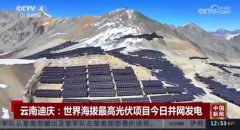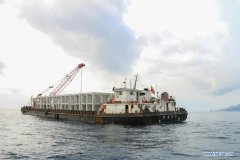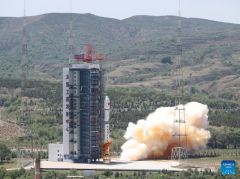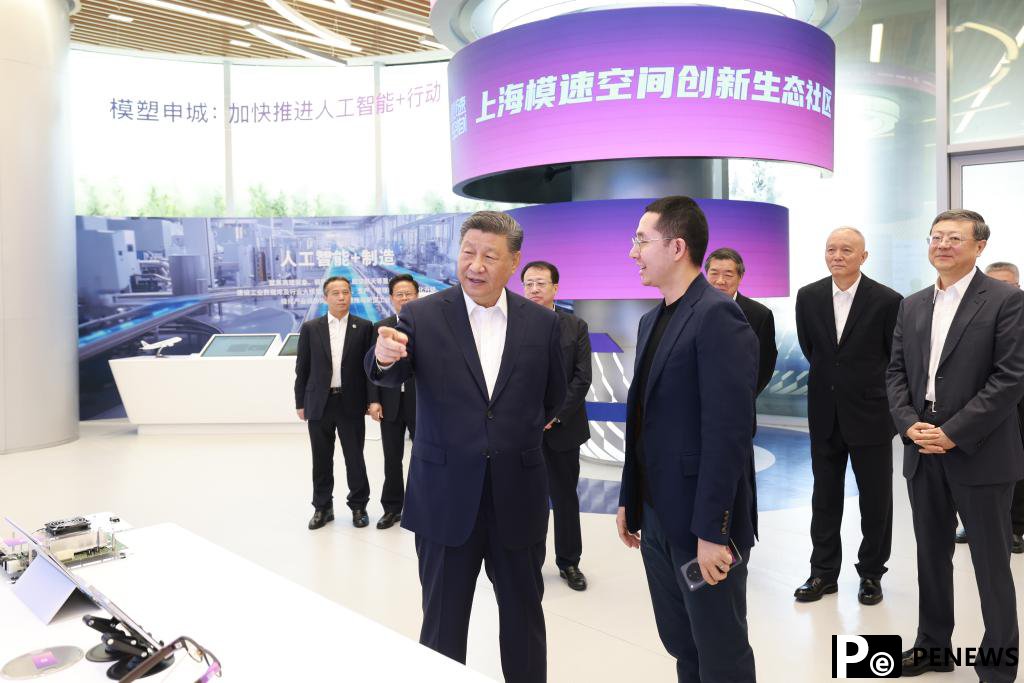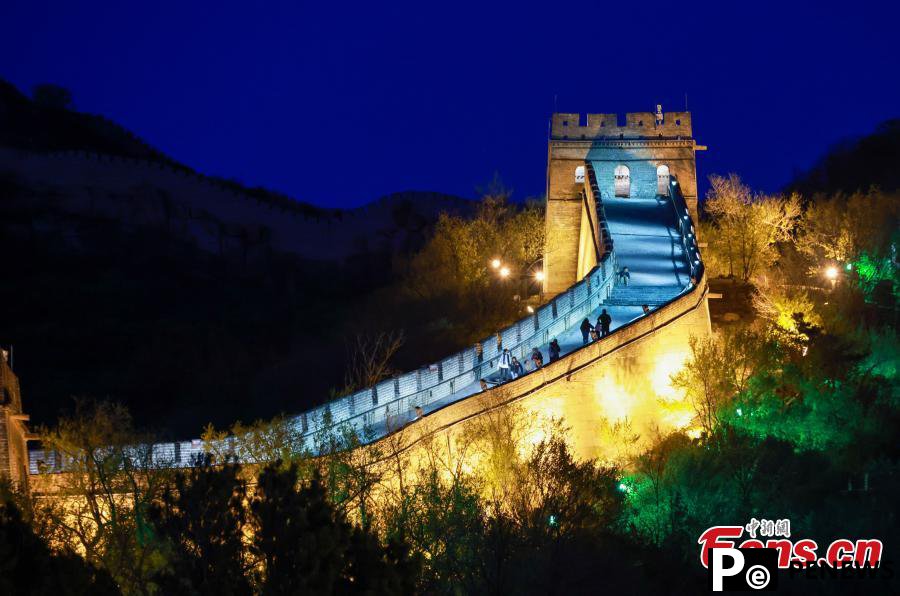Home>>
When cooperation knows no borders, humanity builds "Sun" on EarthBy Guo Shuang, Larry Neild, Luo Yu (Xinhua) 09:30, May 03, 2025
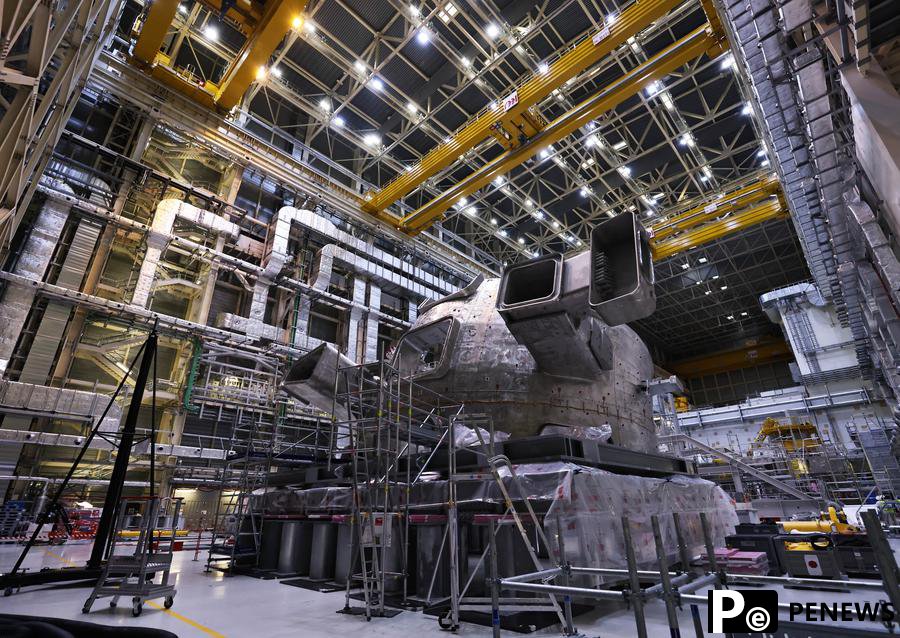
A vast device is seen at a preassembly hall of the world's largest fusion experiment machine, the ITER Tokamak, in St Paul-Lez-Durance, France, Nov. 23, 2023. (Xinhua/Gao Jing)
ITER, popularly known as "Artificial Sun," said it had completed all components for the world's largest, most powerful pulsed superconducting electromagnet system, showcasing what global cooperation can achieve in the pursuit of clean energy.
LONDON/PARIS, May 2 (Xinhua) -- In an era shadowed by climate anxiety and geopolitical division, the International Thermonuclear Experimental Reactor (ITER) has achieved a milestone that resonates far beyond the scientific community.
On Wednesday, ITER, popularly known as "Artificial Sun," announced that it had completed all components for the world's largest, most powerful pulsed superconducting electromagnet system.
ITER, meaning "the way" in Latin, is one of the largest and most significant international scientific research projects in the world. It brings together more than 30 nations -- including the European Union, China, the United States, Russia, Japan, South Korea and India, aiming to demonstrate nuclear fusion, the power of the sun and stars, as a safe, abundant, and carbon-free energy source for the planet.
Thousands of scientists and engineers assembled this single machine using components from hundreds of factories across three continents to build a single machine, providing a shining example of what global cooperation can achieve when humanity unites to pursue the limitless, clean energy of the stars.
BRIDGING DIVIDES
ITER's achievement is remarkable amid the current global context. As geopolitical tensions and protectionist currents threaten to fragment international cooperation, ITER stands as a rare and powerful testament to what humanity can accomplish when united by common purpose.
"It's a great sign of hope, just to show that mankind at the end can cooperate, for they share a problem, and they try to find shared solutions," ITER Director General Pietro Barabaschi told Xinhua in an exclusive interview. "In the current geopolitical situation in the world, such collaboration is incredible."
Thousands of engineers and scientists have contributed components from hundreds of factories on three continents to build a single machine since the idea for an international joint experiment in fusion was first launched in 1985.
Under the ITER agreement, officially signed on Nov. 21, 2006, Europe, as host member, contributes 45 percent of the cost of the ITER Tokamak and its support systems, while China, India, Japan, South Korea, Russia, and the United States each contribute 9 percent. But all members have access to 100 percent of the intellectual property.
In total, ITER's magnet systems will comprise 10,000 tons of superconducting magnets, with a combined stored magnetic energy of 51 gigajoules. The raw material for these magnets consists of more than 100,000 kilometers of superconducting strand, fabricated in nine factories in six countries.
"There was not a single country that could fabricate all these magnets ... there just wasn't enough industrial power," said Barabaschi.
ITER's official spokesperson Laban Coblentz said China's contribution is crucial. "To be specific, China provided around 65 percent of the actual coil material -- the niobium-tin superconducting strands housed in steel jackets that form the ring-shaped poloidal field magnets. These key components, produced in China, were then integrated by Europe and other partners into the ITER system," he explained.
"This is an extremely exciting time to be in fusion," Arun Bhattacharya, chair professor in fusion energy at the University of Birmingham, told Xinhua. "The biggest thing here is that it's not just one or two individuals or one or two countries doing it. You (can) feel it across the globe that people are moving in this direction."
A BEACON OF HOPE
"It is a landmark event for many reasons," Marc LaChaise, director of Fusion for Energy, told Xinhua. "This journey began so long ago that some of my team members were not even born when it started. Now, after decades of effort, it's an end from our side, but it's the beginning of another story."
The ITER project traces its origins to the Geneva Superpower Summit in November 1985, when then-Soviet General Secretary Mikhail Gorbachev proposed to U.S. President Ronald Reagan a collaborative international effort to develop fusion energy for peaceful purposes. Conceptual design work began in 1988, progressing through increasingly complex engineering phases until the final design was approved by all members in 2001.
"Our project is designed to demonstrate the feasibility of fusion power at industrial scale in a way that we hope will provide safe, abundant, environmentally clean energy for humanity for generations to come," said Coblentz, ITER's official spokesperson.

